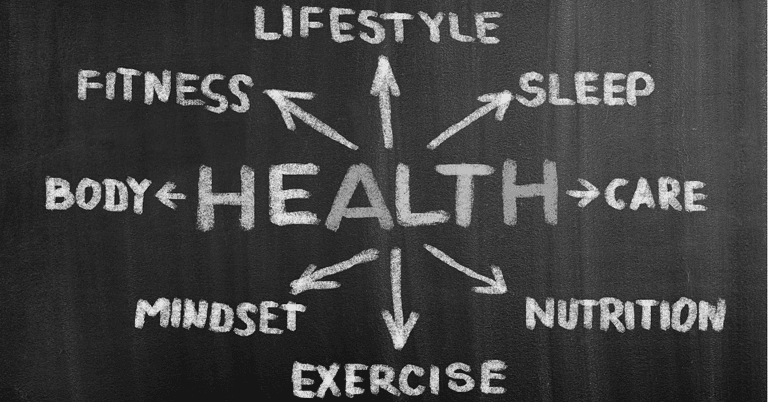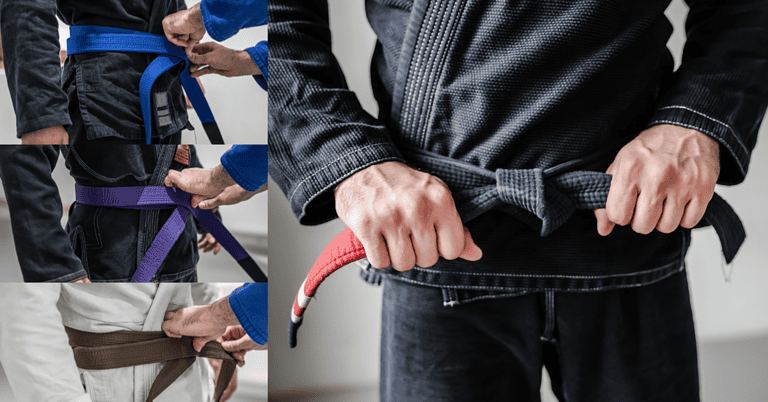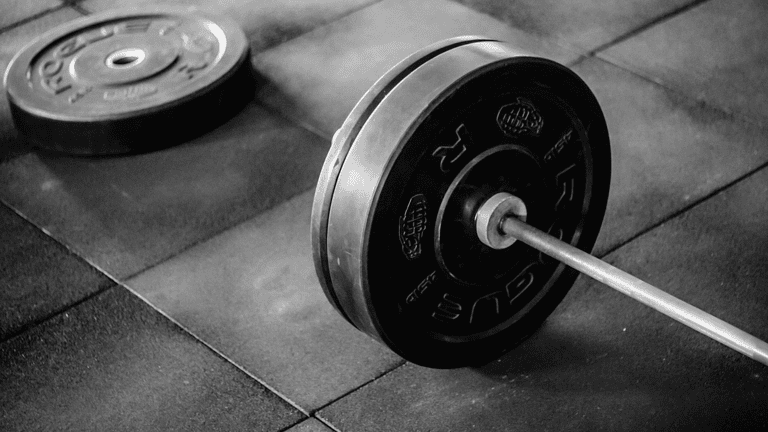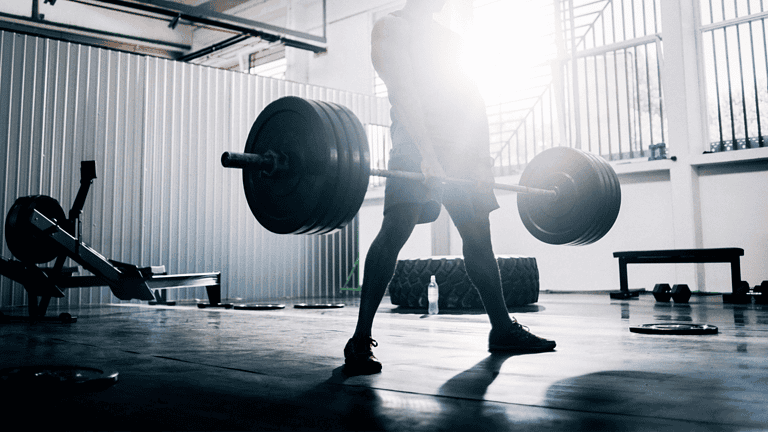7 Benefits of BJJ
If you’re reading an article exploring the benefits of BJJ, I’m assuming you already know what BJJ is. If I’m wrong in that assumption, head down to the end of this article for my answer to the question “What is BJJ?” (you can use the Table of Contents to jump right to it).
Maybe you’ve heard UFC / Mixed Martial Arts (MMA) commentators hailing the effectiveness of Brazilian Jiu-Jitsu (BJJ); maybe you’ve heard friends, family, or coworkers talking about it; maybe you’ve seen celebrities like Keanu Reeves, Tom Hardy, Gisele Bundchen, or Mario Lopez (just to name a few) training BJJ; or maybe you’ve just seen me going on about it (like I did in my “5 Tips to Improve Health” article).
Whatever got you to this point, you’ve decided to take a closer look and find out what the benefits of Brazilian Jiu-Jitsu might be for your overall health and your life in general. So let’s dig into this and see what all the fuss is about.
7 Benefits of BJJ
Benefit #1 – Physical Fitness
Brazilian Jiu-Jitsu is not a passive activity. It’s really a full-body workout that will work every muscle in your body and do far more than just burn calories.
A typical BJJ class will consist of 3 general parts: a warm-up, a technique period where the instructor teaches one or more BJJ techniques, and live sparring (also called “rolling”). Whether you’re a white belt or a black belt, each of these parts will be physically challenging in different ways, and because of this training in BJJ will almost certainly lead to improvements in physical fitness.
Strength
During the warm-up portion of a BJJ class, it’s not uncommon to perform a number of different strength-building exercises (usually using just your body weight or your body weight plus the body weight of another student). For example, you might find yourself doing push-ups, body-weight squats, or some variety of abdominal exercise. But beyond that, you might also find yourself walking laps on the mat while carrying another student on your back or dragging another student on the floor. There are lots of creative ways to use your own body weight (or the body weight of two students working together) to perform strength-building exercises.
In addition to the warm-up, you’re also going to find strength-building potential in the live sparring. While “rolling”, you’re going to be trying to control and dominate another student against his or her resistance while that student is simultaneously trying to do the same to you. It’s a struggle… a grapple. You’re going to be pushing and pulling and gripping and squeezing… and likely using your strength at near maximum capacity… in this effort to control your opponent (or resist being controlled). As you do this more and more, you will naturally build strength as part of the process.
I mentioned “gripping” above. When practicing BJJ, you’ll be doing a lot of gripping… gripping collars, sleeves, pants, etc. of the gi (the BJJ uniform); gripping arms, legs, wrists, and ankles (sometimes these grips will be on your opponent, and sometimes these grips will be on yourself). So a natural outcome of BJJ training is an increase in grip strength.
I bring this up because there have been a number of studies over the past several years concluding that, as we age, there is an inverse relationship between grip strength and the risk of many negative health issues, including all-cause mortality (for example, see here from the Oxford University Press and here from the U.S. National Institutes of Health). What that means is that as we age higher grip strength indicates a lower risk of, for example, all-cause mortality (and conversely lower grip strength indicates a higher risk). All of the “stuff” (e.g. muscular processes and overall body strength) that’s generally part of having high grip strength allows it to serve as a predictive biomarker for health, and BJJ can help in this development.
Endurance
When I say “endurance”, I’m not talking about running a marathon. Rather, I’m referring to the ability to sustain a high level of physical exertion over an extended period of time.
During the course of a BJJ class, which typically lasts 60-90 minutes, you’re going to have several periods of high level physical exertion. During the warm-up period, things like those push-ups or squats or walking around with another student on your back that I mentioned earlier might be performed for a high number of reps or over an extended period of time. You’re not just going to need to have the strength to perform those activities, but also the endurance to maintain that performance. And if you don’t have that endurance to begin with (which you likely won’t), you’ll develop it over the course of your BJJ training. That’s the point.
And then there’s the live sparring. That whole act of trying to control and dominate another student against his or her resistance while that student is simultaneously trying to do the same to you… that’s not just a brief, momentary thing. A typical round of rolling might last 5 or 6 minutes (sometimes a little more, sometimes a little less), and you’re probably going to do 3-5 rounds of sparring during the course of a class. So that’s something like 15-30 minutes of nearly-continuous, high-level physical exertion.
I remember how fatigued I used to be after class back when I first started BJJ. There were many days where I felt like I might throw up after class (or sometimes during class) and days where I had to sit in my car for a while to collect myself before I was physically able to drive home. That might sound rough, but as the saying goes… hard work pays off and in a relatively short period of time I improved my endurance to the point of being able to handle a high intensity BJJ class without issue.
Mobility / Flexibility
For most people, day-to-day life involves moving around in a fairly linear fashion… walking forward… maybe walking backward… standing up… sitting down… maybe throwing in the occasional bend or twist. BJJ is not like that at all.
There’s a reason BJJ sparring is called “rolling”. The two people sparring are quite literally rolling around on the ground as they grapple with one another. During a roll you might be moving from your back or your side, you might be standing or kneeling or even inverted in some fashion. You might be jumping, sliding, twisting, bridging, and so on. BJJ helps to increase your body awareness and requires you to move in many different ways that you’re not likely to encounter in everyday life, and as you continue to train you will likely see your overall physical mobility improve.
Flexibility sort of goes hand-in-hand with mobility. Improving flexibility in your body’s tissues and joints can lead to greater mobility, and as you become more mobile you will likely become more flexible in return. In warm-ups alone you might do any number of different movements that have the effect of improving your mobility and flexibility. For example, you might find yourself doing some light tumbling like forward rolls, backward rolls, cartwheels, and handstands… or you might find yourself crawling on the ground like an alligator, snake, or monkey.
Whatever the form of exercise, you will be challenged to move your body in new and different ways that your likely not accustomed to, and in return you’ll get a boost to your flexibility and mobility.
Fat Loss / Muscle Gain
All of this physical activity I outlined above can lead to some pretty dramatic body transformations. I intentionally avoided using the phrase “weight loss” here because I think that’s the wrong thing to look at. I think the real goal should be to lose fat while simultaneously gaining lean muscle mass. The number on the scale doesn’t matter so much, and you may actually gain weight as you lose fat and add muscle. It’s improvement in your overall body composition that should be the goal.
Another thing that tends to happen as people become more involved in BJJ is that they clean up other areas of their life. They want to be able to perform at their best when practicing BJJ, so they try to eliminate things that might detract from this. This can often mean cleaning up their diet to eat healthier foods, getting more sleep, or even adding other activities that complement their BJJ training. I’ve seen this play out with so many people, and I’m certainly an example of this myself as over the years my BJJ training has led me to make major positive shifts in my diet, to change my attitude toward sleep, and to get involved with Tacfit.
Benefit #2 – Competition
When we’re young, many of us participate in sports, whether through school or local leagues. These can be team sports like basketball or soccer, or they can be sports that, even if they’re organized in an overall team structure, are more individual in nature like tennis or golf. Whatever the case, these sports provide an avenue for both athletic activity and competition.
Unfortunately, as we get older many of us lose access to organized sports and the competitive outlet they provide. If you’re someone who likes to compete and you miss or desire the feeling of competition, then BJJ might be for you.
With BJJ you get competition at a couple of different levels. First, almost every class will involve some live sparring, and that sparring is a competition between you and your training partner. Best of all, while you might have some clear idea of whether you won or lost a particular round during a particular class, this is a kind of competition that isn’t about winning or losing. It’s about learning, growing, and improving… and being a good training partner so that your opponent can do the same.
Beyond that, your school might have in-house tournaments where students from within the school (or within the network of schools as the case may be) can compete against one another in a more official format with tournament rules but in a friendly, low-pressure environment compared to an actual BJJ tournament (which also serves as good practice for those actual BJJ tournaments).
Speaking of tournaments… BJJ has grown in popularity so much over the past several years that there is now an abundance of different tournaments available to those who really want to put their skills to the test and compete against students from different schools, different cities, etc. No matter where you’re located, you’ll likely be able to find a competition nearby where you can go for the gold.
Benefit #3 – Learn Self-Defense
While BJJ has grown (and continues to grow) into a popular competitive sport, one thing we can’t forget is that BJJ is first and foremost a martial art. And one of the key purposes of martial arts is to develop self-defense skills.
BJJ really burst into the American consciousness back in the early 90s with the very first UFC event. Through that event and many that followed after, BJJ was proven to be a superior martial art (and arguably the best martial art) that actually worked in a real combat situation. It also demonstrated one of the key principles of BJJ… that a trained person, even if they are smaller and weaker, can defeat a larger, stronger opponent by using technique and leverage.
This is what makes BJJ so effective for self-defense. We know it works. We’ve seen it work in fighting events. We see it work every time we do live sparring. We know what it feels like to grapple with another person, and how we can use BJJ to overcome a less skilled opponent even if they happen to be bigger, heavier, or stronger.
This is why I recommend BJJ for self-defense to the women in my life. If they ever find themselves in a self-defense situation against a male assailant who is most likely going to be bigger and stronger, and that struggle hits the ground (as it’s very likely to do), there is no system or art that I’d rather have them equipped with than BJJ.
Benefit #4 – Family Activity
Even though BJJ might seem like a very individualized activity, it can very often turn into a family activity. I’ve seen it happen so many times.
Maybe parents enroll their child in BJJ class because they’ve heard about the effectiveness of BJJ and they want him or her to experience all of the benefits that children are believed to get from martial arts in general (build confidence, discipline, honor, mental strength, etc.) The parents bring the child to class, and after watching for some period of time they find that they want to give BJJ a try too.
On the flip side, a parent starts taking BJJ classes. He or she falls in love with it and wants to share it with other members of the family. The next thing you know, the significant other is giving BJJ a try. The kids are giving BJJ a try.
Whichever direction it comes from, the end result is that the whole family becomes involved in BJJ and it becomes an incredibly positive activity that they can all share together. Within the school you’ll likely make new friends and you might find other families in the same situation that you can build more extensive bonds with. So beyond your actual family, the other people at your BJJ school end up becoming your extended family, which brings us to…
Benefit #5 – Community
As individuals and families train and grow together over time, a natural camaraderie will often develop among the students just due to the intensity and nature of BJJ training and the idea of being on the same team. But in my opinion, a good BJJ school really develops a sense of community among its members.
This can take the form of events at the school that take place outside of BJJ class. Things like holiday events, kid parties, team picnics, etc. can go a long way toward building a feeling of community among the students and give them an opportunity to see each other “off the mat”.
For people who don’t have family who live with them or live nearby, who don’t have a strong network of friends, or who otherwise feel socially isolated, a BJJ school can provide the relationships and community that they might be missing and can become a sanctuary of interpersonal connection and support.
Extending this idea beyond the individual BJJ school, you’ll find that there is also a larger BJJ community. While different schools might be competitive with one another or rivals from a tournament perspective, I think there is a natural camaraderie that exists in the BJJ world at large. When you interact with someone and find that they too are practitioners of BJJ, even if you just met this person there is a certain knowing that comes with that and an immediate bond that wouldn’t exist otherwise. So wherever you go, around your country or around the world, you’ll likely find a community that welcomes you as a fellow BJJ practitioner.
Benefit #6 – Mental Health
The ways in which BJJ can help mental health have been woven throughout the other benefits above.
Losing fat, building muscle, improving your body composition, and feeling good about the way you look. Getting in shape, improving your strength and endurance, and feeling proud of what your body can do. Learning how to defend yourself and knowing that you can handle yourself in a physical altercation if the need should ever arise. These can go a long way toward improving your self-perception and helping you become more confident in various aspects of your life.
When you’re in the middle of a BJJ sparring session, it’s a time when you can have mental focus and be totally present. You’re not thinking about problems outside of the gym, about the project you need to complete for school or work, or anything else that might otherwise drain you mentally and emotionally. You’re present in the moment and focused on the task at hand… executing your BJJ strategy and not getting submitted by your opponent. BJJ has a knack for helping people work through the challenges of life and deal with stress.
Feeling alone can be very detrimental to a person’s mental health. The community component of BJJ that I outlined above can really fill that void for those who need it and give them that support structure and feeling of family.
Lastly, one thing I didn’t mention before, is that BJJ is mentally stimulating and challenging. BJJ is a mental activity as much as it is a physical activity as you’re constantly developing and executing strategies, both before a match and in the moment, and you’re learning to stay calm while quickly problem-solving and working to think your way out of what could be dangerous situations. It’s for these reasons that BJJ is often referred to as “human chess”.
Benefit #7 – Popularity
With all of the fantastic ways that BJJ can have a positive impact on a person’s life, it would be a shame if it wasn’t accessible… if it was obscure… if practitioners and schools were few and far between. Fortunately that’s the case with BJJ.
Over the past 30 years BJJ has exploded all over the world, and the momentum only seems to be increasing. The number of schools and the number of cities in which they’re located continues to increase which makes BJJ more accessible to more people than ever before. The number of students at those schools continues to increase, so as a BJJ practitioner you have access to more training partners, different body types, different styles, and different skill levels. And the number of tournaments and the cities in which they’re located continues to increase, providing more and more opportunities for students to test themselves and experience the thrill of competition.
There’s a reason why BJJ has become so popular and continues to grow in popularity every day. It simply works, and its benefits are undeniable. So when you make the choice to start BJJ, you don’t have to worry that you might be investing your time and energy into something that isn’t worthwhile and won’t be there for you down the road.
Conclusion
I won’t deny that I’m a bit of a BJJ evangelist. I simply believe wholeheartedly in its effectiveness as a martial art and in the many different ways that it can benefit a person’s life both physically and mentally. I’ve seen those benefits of BJJ in my own life and in the lives of others.
If you’d like to take the next step toward experiencing the benefits of BJJ for yourself but could use some additional guidance, check out my article “How to Start BJJ”.
No matter your age, sex, size, shape, etc., it’s never too late or too early to give BJJ a try.
What is BJJ?
If you’re looking for a detailed history of BJJ, I’d recommend checking out something like Wikipedia. What I’ll give you here is my personal take on the answer to the question “What is BJJ?”
BJJ traces its roots to the early 1900s when a Judo missionary-of-sorts named Mitsuyo Maeda traveled from Japan to Brazil to spread the word about Judo and demonstrate it as an effective martial art. In Brazil, he became associated with a local businessman named Gastao Gracie and began teaching his art to Gracie’s sons. Over time the Gracies modified the art placing a primary focus on grappling / ground fighting with an emphasis on submitting opponents with various chokes and joint locks. What started out as Judo had evolved into Brazilian Jiu-Jitsu (or “BJJ”).
Today BJJ maintains that focus on ground fighting and submissions. You’re not going to see BJJ practitioners doing flashy, jumping, spinning kicks or participating in elaborately choreographed fight demonstrations. That’s not what BJJ is about. BJJ involves two people putting their hands on each other and grappling.
I think of BJJ as being what you might get if Judo and wrestling had a baby. Practitioners typically wear a gi (the BJJ uniform) that is similar to the gi worn by practitioners of Judo, but you’ll more likely find BJJ practitioners rolling around on the ground grappling with one another than standing on their feet trying to execute a powerful throw or takedown.
So what is BJJ? At its core, BJJ is a martial art. And it’s a martial art that has proven its superior effectiveness in combat and self-defense applications for more than 100 years. But over the past 20 years or so, BJJ has also developed into a worldwide movement; a passionate hobby for some; an elite athletic pursuit for others; a lifestyle for many; and a sport that allows people of all ages, walks of life, and skill levels to participate in competition.








